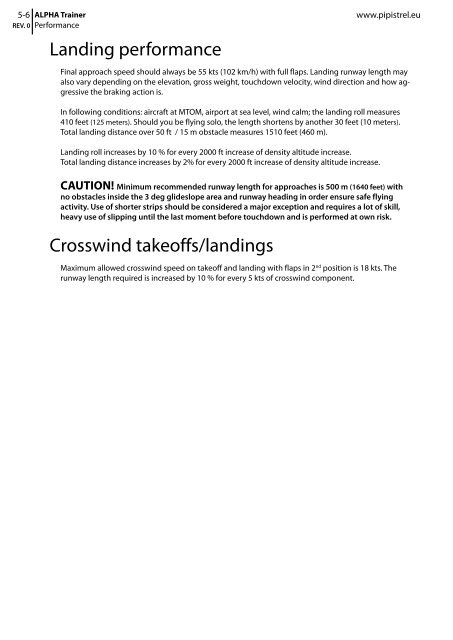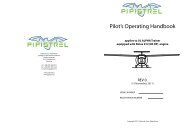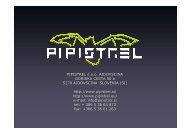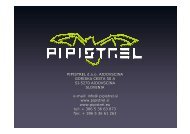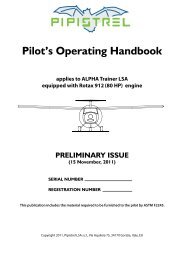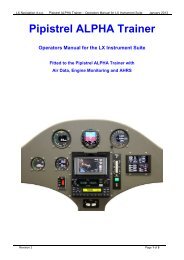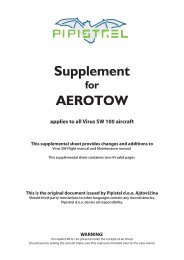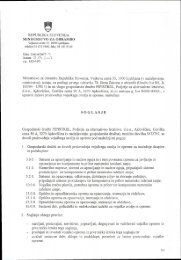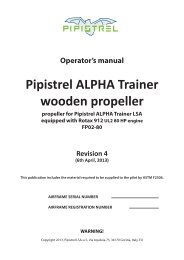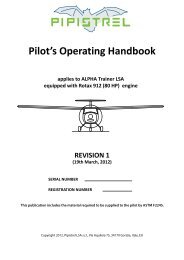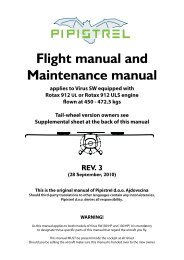Create successful ePaper yourself
Turn your PDF publications into a flip-book with our unique Google optimized e-Paper software.
5-6 <strong>ALPHA</strong> <strong>Trainer</strong><br />
REV. 0 Performance<br />
Landing performance<br />
www.pipistrel.eu<br />
Final approach speed should always be 55 kts (102 km/h) with full flaps. Landing runway length may<br />
also vary depending on the elevation, gross weight, touchdown velocity, wind direction and how aggressive<br />
the braking action is.<br />
In following conditions: aircraft at MTOM, airport at sea level, wind calm; the landing roll measures<br />
410 feet (125 meters). Should you be flying solo, the length shortens by another 30 feet (10 meters).<br />
Total landing distance over 50 ft / 15 m obstacle measures 1510 feet (460 m).<br />
Landing roll increases by 10 % for every 2000 ft increase of density altitude increase.<br />
Total landing distance increases by 2% for every 2000 ft increase of density altitude increase.<br />
CAUTION! Minimum recommended runway length for approaches is 500 m (1640 feet) with<br />
no obstacles inside the 3 deg glideslope area and runway heading in order ensure safe flying<br />
activity. Use of shorter strips should be considered a major exception and requires a lot of skill,<br />
heavy use of slipping until the last moment before touchdown and is performed at own risk.<br />
Crosswind takeoffs/landings<br />
Maximum allowed crosswind speed on takeoff and landing with flaps in 2 nd position is 18 kts. The<br />
runway length required is increased by 10 % for every 5 kts of crosswind component.


